Pharmacy jars come in all shapes and sizes, and each one was designed for a specific function. Jars with spouts and handles would be referred to as wet jars and would be used to contain liquid ingredients such as oils, or syrups like honey. These jars would typically be smaller, and the larger they were the more likely it would be for them to have a larger spout and two handles instead of the one. Dry jars, in comparison, would typically be more cylindrical in shape and held dried herbs like St. John’s wort, thyme, lavender, sage and fennel. Often jars would have Latin inscriptions on them that would detail the ingredient(s) inside.
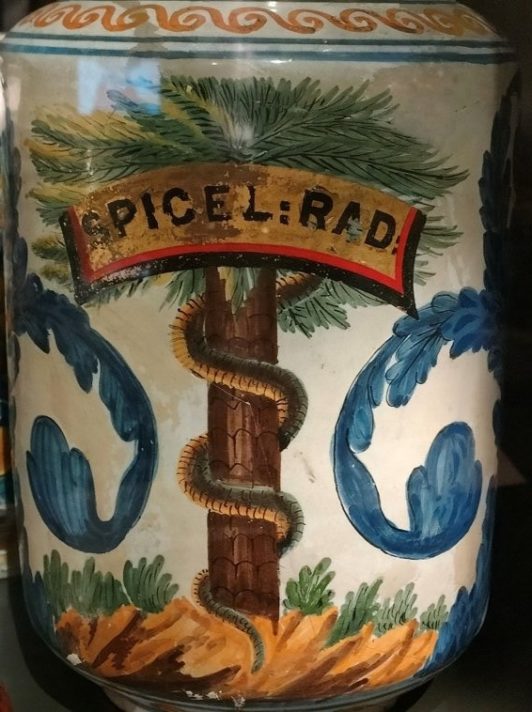
This jar can be found in our Order Gallery; it has the words “spicel rad” written on the front, meaning pink root which was used by early pharmacists and healers as a laxative. Alternatively, parchment (or later, paper) labels could be attached around the rim or handle of a jar with string. These labels allowed the contents of the jar to be changed if, or when, needed. Overall labels were adorned, in one way or another, to the jars so that the ingredients could be quickly and efficiently recognised.
The jar above is an albarello style dry jar from the seventeenth century. Albarello refers to a specific type of maiolica, which were earthenware items covered with an opaque tin glaze. These styles were primarily from Middle Eastern Islamic potters and were brought to Europe where potteries were established, and the production of jars flourished. Many jars were commissioned for use by pharmacies and monasteries – of course, the more intricate the artwork and overall design was, the more expensive the jar would have cost. In some cases, intricately designed pharmacy jars were commissioned simply to be put on display to show to visitors that its specific monastery or pharmacy had the funds to afford such a thing. This could have been especially the case with albarello maiolica jars, which were often designed to fit alongside others of matching designs. An individual typically did not just purchase one of these jars, they would buy the whole set.
Historical and religious themes were incredibly popular in the seventeenth and eighteenth centuries. Within our own collection we have the Spanish cabinet, which can be found in our Chapter Hall.
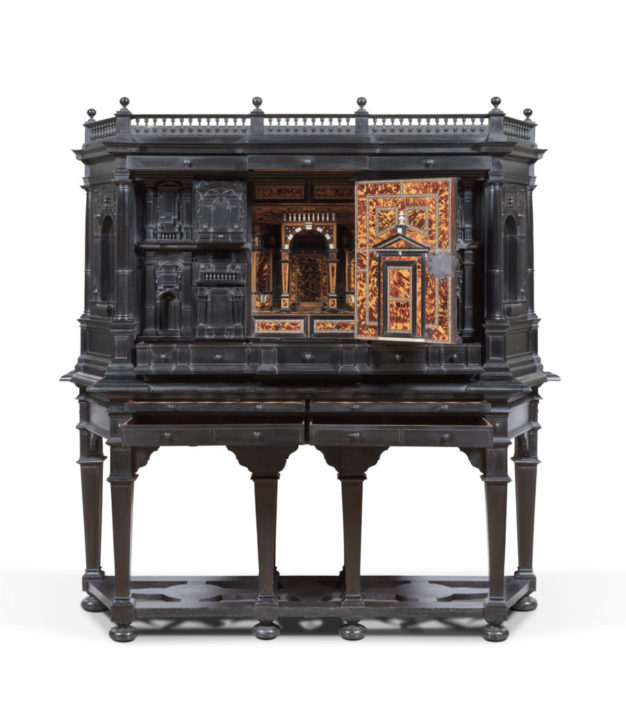

This cabinet was a gift given in 1670 from the Regent King of Portugal, Pedro II, to the Grand Master of the Order of St John, Nicholas Cotoner. Within the cabinet there are two beautiful paintings alluding to Roman mythology. The one on the Left is of Diana, the Roman goddess of the moon, and on the right is Lucretia, a noblewoman of ancient Rome whose death triggered the rebellion that led to Rome’s transition from a kingdom to a Republic.
Pottery, however, was one of the primary places where these allegories to ancient history and mythology could be seen, and the use of snakes on pharmacy jars are representative of that.
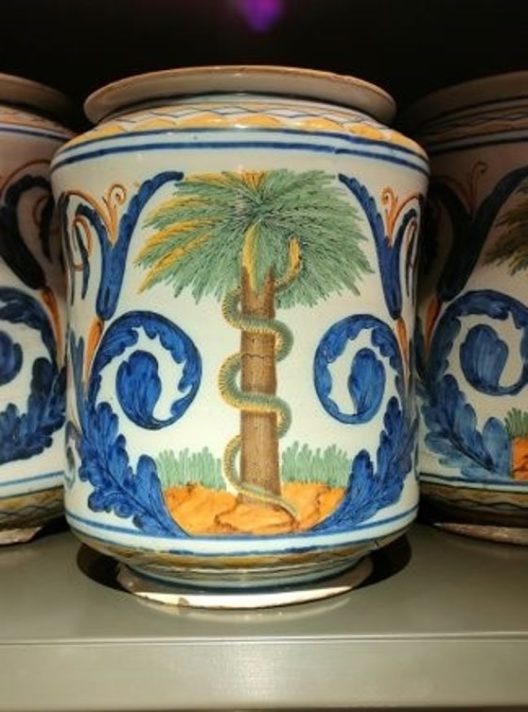
On many albarello maiolica jars in our collection (as in seen in the image above) a snake can be seen entwined on a palm tree. This is an image that harkens back not only to the Bible but also to Ancient Egypt, Ancient Greece, and Ancient Rome. So why was this imagery used? What does the snake symbolise?
Let us start with the Old Testament where Christian and Jewish tradition provide several references to snakes. The most well-known example is with the Garden of Eden where Adam and Eve are tempted to betray God by a serpent coiled around the Tree of Knowledge. In this instance the snake has become synonymous with the devil, a representation of sin, trickery, and temptation. However, in the Book of John, Jesus was compared to the serpent lifted by Moses to become the staff that cures the ills of humankind. Opposing the negative connotations of the snake in the garden, this snake symbolises hope.
This divisive symbolism of the snake also extended into Ancient Egypt. On the one hand there was Apopis, also known as Apep, who was the ancient Egyptian demon of chaos. Apopis had the form of a serpent and represented evil, threatening to overturn the natural order of the world. Contrastingly, snakes were also used as symbols of protection from evil. Pharaohs wore the “royal ureas” on their foreheads. This was a royal headdress with a snake in the centre. From the eighteenth dynasty onwards, queens also added one or two snakes to their own headdresses, representing Wadjet the goddess of cobras, and seeking her protection. This really cements the contradictory symbolism of snakes further.
In Ancient Greece there were two contradictory classes of snakes. The agathodaemon was the beneficent and healing serpent, whereas the kakodaemon was demonic and evil. Perhaps the most applicable use of the snake imagery would be with the rod of Asclepius.
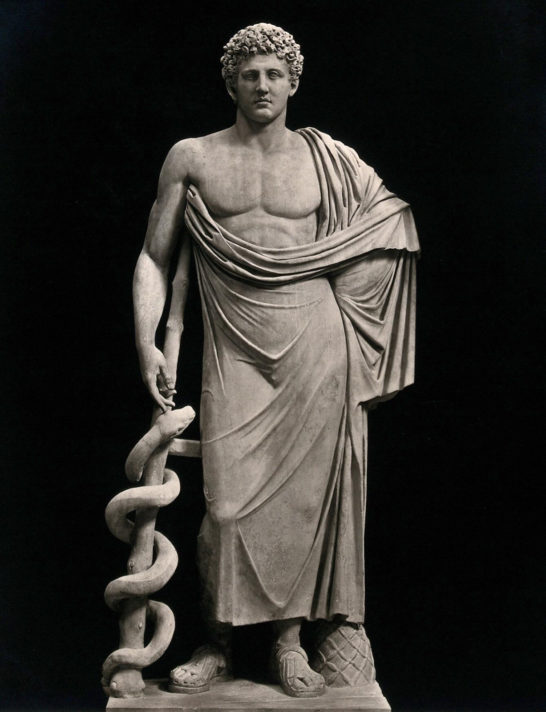
Asclepius was the son of Apollo, and the Greek and Roman god of healing. In most depictions, Asclepius could be seen holding onto a rough-hewn branch with a singular snake wrapped around it. The branch has been argued to represent earth and nature while the snake was to represent the circle of life via the cyclical shedding of its skin. Pilgrimages were made by people of all standings to visit the temple of Asclepius, where he would hear their pleas and would later visit them in their dreams and heal them while in the form of a snake. In Rome, Asclepius was introduced primarily during the 293BC plague where he became one of the most popular gods of the empire. Asclepius was said to have loved caring and healing others so much that he lost his own life bringing others back from the dead. All in all, Asclepius became synonymous with his symbol of the snake and the branch, and in turn the snake and the branch became a symbol of medicine. From Ancient Greece into the Middle Ages Hospitallers, alchemists, and everyday people would be able to spot the symbol on this jar and without words know that what was inside would be helpful in healing and aiding the sick and injured.
Throughout the years, however, this symbol has become confused with Caduceus, the staff of Hermes.
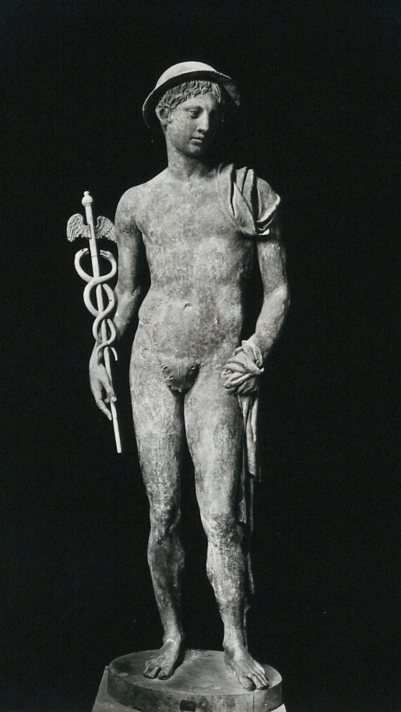
With a cursory glance at the two symbols, similarities can be clearly identified. Both symbols include snake imagery with an agricultural element down the middle. There are also, however, clear differences. The rod of Asclepius only has one snake wrapped around a roughly cut branch, whereas Caduceus has two snakes weaving around a polished staff with wings sprouting out of the top. If the pharmacy jars are most likely alluding to the rod of Asclepius, however, why does Caduceus remain important in our discussion?
One argument is that Caduceus and the rod of Asclepius were natural counterparts to one another and essentially two sides of the same coin. While the rod of Asclepius dealt primarily with healing and life, Caduceus could be linked to peaceful deaths due to Hermes’ duty as messenger of the gods in guiding departed souls across the River Styx into the underworld.
Another argument has been that Caduceus was not at any point a symbol of healthcare but instead an emblem of alchemy and pharmacy. Alchemy, which was of growing interest from the late medieval period onwards, was the chemical science which studied the conversion of base metals into gold or silver, aimed to discover a means of immortality and to find a universal cure for all diseases. Hermes and Caduceus became adopted over time as an alchemical symbol due to the regular use and studying of quicksilver, known as mercurius philosophorum. This is important to note as the Roman counterpart to Hermes was known as Mercury.
It has been suggested that over time, the two similar symbols of alchemy and medicine slowly became muddled until there was an “official” switch in public memory from the rod of Asclepius to the staff of Hermes in 1902 where the US Army Medical Corps incorporated Caduceus as its symbol. From there it was argued that the iconography of the double snakes and winged staff became popularised and widespread throughout America and has now become recognised internationally as a medical symbol, much like that of the Red Cross and the eight-pointed cross for St. John Ambulance. To paraphrase the Iranian medical historian George Katasaras, “throughout human history” symbols have been used as a “way to represent powerful ideas.” From the rod of Asclepius, to Caduceus, to the eight-pointed cross, these symbols have undeniably represented dutiful healing and caring for the sick and injured across hundreds of years and will continue to do so for many years to come.


